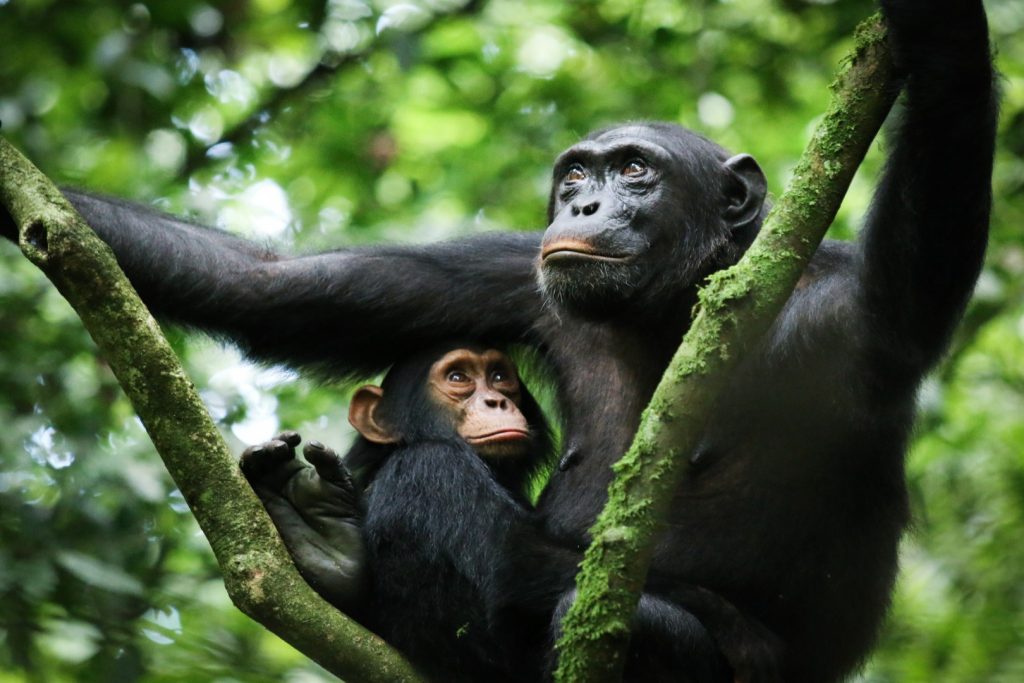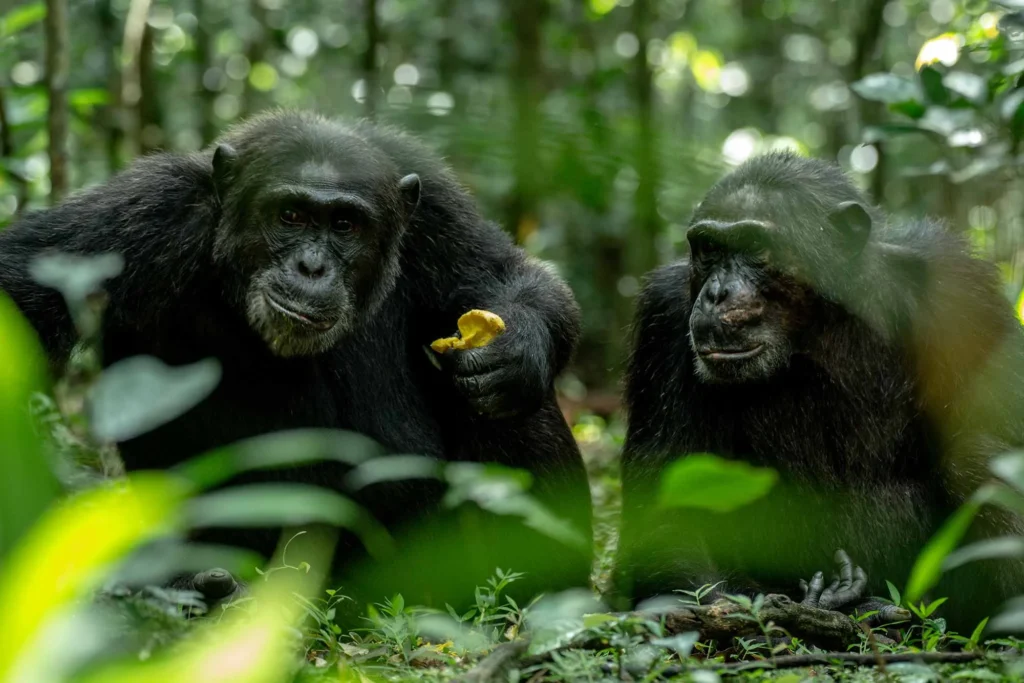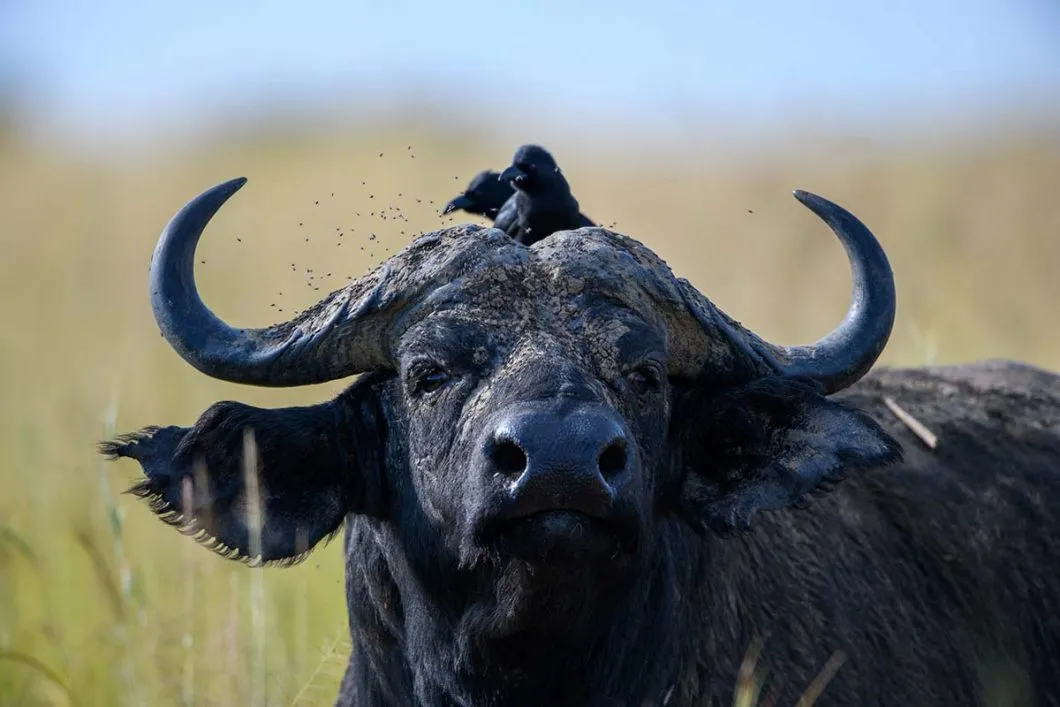
Chimpanzee Habituation in Uganda
Chimpanzee Habituation in Uganda.
Chimpanzee habituation in Uganda is an exceptional experience that no tourist cannot miss out on while on safari in the country. Take home a wealth of exciting and adventurous experiences from the chimpanzee habituation experience on a Uganda safari. Spending a full day with Uganda’s chimpanzees is a very different experience than just an hour with them. Unbeknownst to most visitors, they have the option to select between chimp trekking and chimp habituation. It is completely different from the other.
There are an estimated 4950 chimps in Uganda, of which 1500 are thought to be in Kibale Forest alone. There are two authorized areas in Uganda where tourists can engage in chimpanzee habituation experiences: Kibale Forest and Budongo Forest. Nevertheless, chimp habituation occurs on Ngamba Island, which also has a chimpanzee sanctuary.
The process of acclimating chimpanzees to human presence is known as “chimpanzee habituation experience,” and it can take up to two years. On a chimp habituation tour in Uganda, guests spend the entire day with chimpanzees, observing and learning about their eating and behavioral patterns in the wild. It’s important to be mentally and physically ready for the chimp habituation process in Uganda. Around 6:00 am or 7:00 am in the morning, before it gets light, the activity begins. This suggests that before entering the forest, visitors should eat breakfast and carry packed lunch.

All activities including the chimp habituation experience at Kibale National Park start with a briefing from the UWA head ranger, just like chimp trekking and gorilla trekking activities do. Before daylight, your guide will greet you, give you a briefing, and send you into the thick of the jungle.
As part of the chimp habituation process, you can record the apes’ most recent behavior as well as the location of their nests from the previous evening. Tourists on the chimp habituation experience discover how to identify the chimps individually based on their markings, scars, and other distinctive features that set them apart from the others. In Uganda, the chimp habituation process is carried out in groups. A small group can consist of four visitors, a guide, and a UWA ranger, whereas a large group can consist of eight people, including the guide, ranger, and six tourists.
At the conclusion of the day (about 7 p.m.), the chimps return to their newly constructed nests for the night-time, while tourists return to their lodges. For most guests, this is the conclusion of the wonderful chimp habituation experience, with many of photographs to take home as memories of an incredible chimp habituation safari in Uganda.
Where to do Chimpanzee Habituation in Uganda.
Chimpanzee Habituation in Kibale National Park.
In the southwest of Uganda, is Kibale Forest, where the travelers have to become accustomed to chimpanzees. Uganda Wildlife Authority runs Kibale National Park, which offers the magnificent chimp trekking and habituation excursions to various travelers.
Visitors are grouped no more than six people and are accompanied by an armed UWA ranger and a knowledgeable guide who can locate and follow the chimps with ease. Visitors to Kibale Forest during the chimpanzee habituation programme will also have the chance to see buffalo, warthogs, bush pigs, elephants, black and white colobus monkeys, L’Hoest’s monkeys, and buffalo. In addition, over 350 different bird species can be seen in the forest, such as the grey parrot, olive long-tailed cuckoo, and ground thrush, to mention a few.
Prior to chimpanzee habituation in Kibale Forest, visitors must register at the park’s visitor centre. The top ranger in the park will then give you instructions before you venture into the jungle. Travellers from Kampala City must drive about 308 kilometres to get to Kibale National Park. You will need four to five hours to drive this trip.
Chimpanzee Habituation in Budongo Forest-Murchison Falls National Park.
Budongo forest near Murchison Falls National Park is another location in Uganda where travelers may go chimpanzee trekking while on safari. However, only during the low/off seasons when there is less foot traffic in the forest are chimpanzee habituation experiences offered. A private company known as the Jane Goodall Institute for Research provides both chimp habituation and tracking experience in Budongo Forest.
Chimpanzee habituation in Budongo forest in Murchison Falls National Park started in 1992 with the convey purpose of acquainting chimps with humans by riding the primates out of their fear of humans. The apprehension that chimps have and may still have for humans originated as a result of the species’ on-going hunting, particularly in recent years. Chimpanzees were hunted for their bush meat, which was then sold on the underground market. However, because of to ongoing conservation and chimp rehabilitation initiatives, the once-endangered primates are now shielded from such external dangers, and their numbers have increased dramatically.
Only visitors above the age of fifteen are permitted to trek and acclimatize chimpanzees in the Budongo forest. This is an activity that is only suitable for the age ranges listed because it involves a lot of strenuous walking and trekking that is not suitable for young children. Moreover, it’s unsafe for kids to engage in this activity because you never know how the chimps might react to humans among them.
Chimpanzees in Budongo Forest may occasionally be observed walking about Budongo-eco Resort, which can be an exciting sight for those staying at the lodge. Chimpanzee acclimatization may be done at Budongo Forest for USD 160 per person.
Cost of Chimpanzee Habituation in Uganda.
Tourists who are interested in chimp habituation in Uganda must pay $250 per person for foreign non-residents and foreign residents, as well as UKibale National Park.GX 200,000 shillings for East African nationals. This price is for a full-day chimp habituation session at
Best Time for Chimpanzee Habituation in Uganda.
March through May and November are the ideal times to acclimatise chimpanzees in Uganda. During this season, visitors may easily track the chimps and get much closer to them because there is less crowding in the Kibale National Park and Budongo forest.







